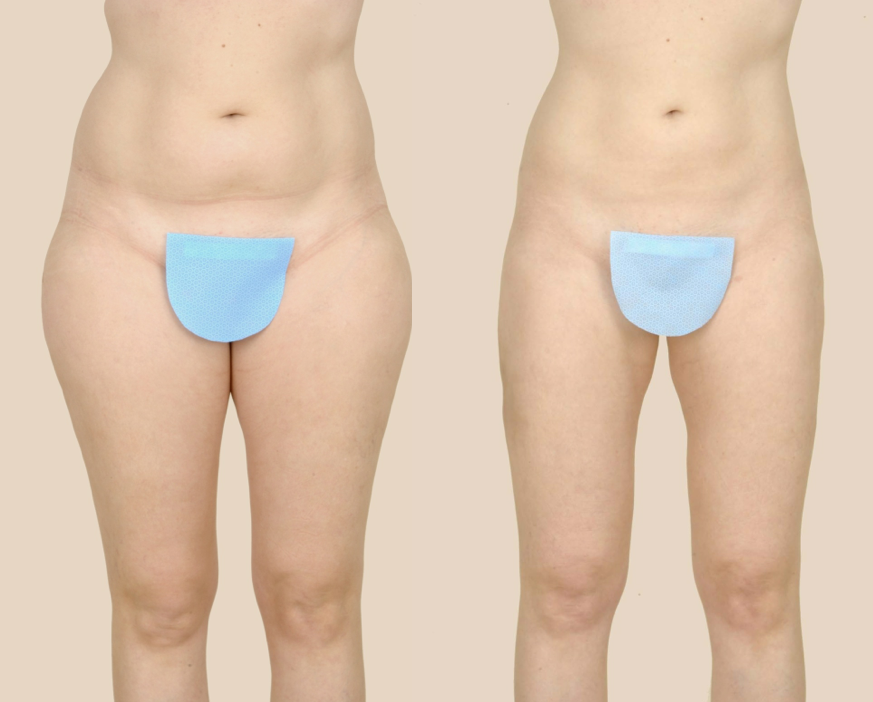 We’ve all considered it…well many of us have. Liposuction is a very popular procedure and is very appropriate for healthy, fit patients looking to remove stubborn pockets of fat that exercise and diet can’t address. But there’s a lot of bad information out there on the internet. This post is the exception. So read on to learn five of the most common myths of liposuction.
We’ve all considered it…well many of us have. Liposuction is a very popular procedure and is very appropriate for healthy, fit patients looking to remove stubborn pockets of fat that exercise and diet can’t address. But there’s a lot of bad information out there on the internet. This post is the exception. So read on to learn five of the most common myths of liposuction.
1. If I get liposuction to one area, fat will come back in another area
I don’t care how many times you read it or say it, it still isn’t true. This is how it works.
By the end of your adolescence, your body forms a certain number of fat cells. They don’t multiple after that. That only expand or shrink depending on your fat intake. So after liposuction, you have a fewer number of fat cells. You can still eat fatty foods and what fat cells you have left after lipo will absorb that fat.
However, the fat that you take into your body isn’t smart enough to say, “oh, they did liposuction to the abdomen, so I’m going to go to the arms.” It doesn’t work that way. Your body is genetically predisposed to have more fat collect on the hips or the thighs or the bra chub or wherever. We’re all a little different. So whether you’ve had liposuction or not, fat will continue to deposit in those same areas. Simply having liposuction won’t change your genetic predisposition and therefore won’t change where your fat tends to deposit.
2. Once I get liposuction, I can eat whatever I want and not get fat
You can, but you shouldn’t. Don’t use liposuction as a way to lose weight. Use it as a way to motivate yourself to work harder to stay in shape. And as mentioned above, eating more after liposuction won’t increase your number of fat cells, it’ll just make your remaining fat cells swell.
3. Liposuction can treat cellulite
It can’t. Cellulite, the dimpling often seen on the outer thighs near the buttocks is not caused by fat only. There are fibers that extend from the deep tissues of the thigh up to the skin. Those fibers pull on the undersurface of the skin, and the fat in between those fibers give the skin that characteristic dimpling. So if you only get rid of fat, the fibers and the dimples will still be there. The treatment is to cut the fibers.
There are several treatments for this but the problem is that the fibers can regrow and reattach to the undersurface of the skin. So while there are new good treatments for cellulite, like Cellfina, it’s not clear how long the improvement lasts.
4. You’re left with sagging skin after liposuction
Luckily, if you have good quality skin with lots of collagen and recoil, the skin will tighten after liposuction. But it’s also up to your surgeon to exercise good judgement to know when you have so much skin that you need the skin removed (like in a tummy tuck) vs only liposuction. And contrary to popular belief, laser liposuction does not tighten the skin better than regular liposuction. However, laser lipo certainly can increase the risk of you getting 3rd degree burns of the skin from the inside!
5. Liposuction is an easy way to lose weight or cure obesity
While you certainly do lose a few pounds with aggressive liposuction, that’s not the point. Liposuction is there to help sculpt your body, not weight loss. In fact, removing too much fat in an effort to help you lose weight can be dangerous. By removing too much fluid, you can go into an extreme case of dehydration calling hypovolemic shock. Even if you don’t know exactly what that means, it certainly sounds bad. So don’t go through lipo to lose weight. Do it for the right reasons.
And here’s a bonus myth of liposuction debunked:
Liposuction is expensive!
See for yourself, check pricing on liposuction from a doctor near you by clicking here.




